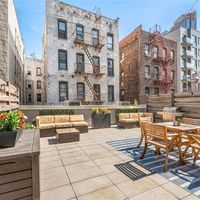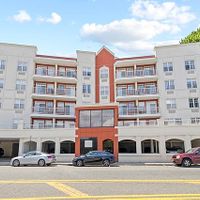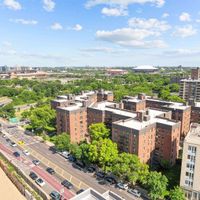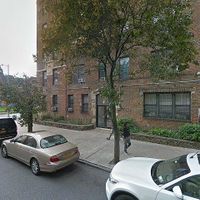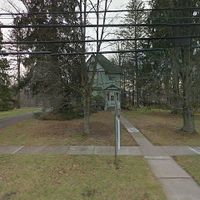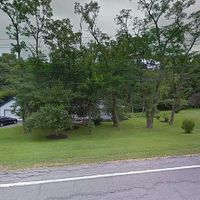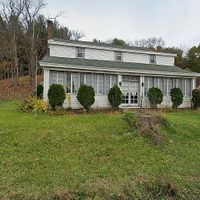New York Rent to Own Homes
More than 12 million hopeful newcomers passed through Ellis Island between 1892 and 1954. Though the port closed its doors as an entry point to the U.S. many years ago, New York continues to be a destination state for immigrants. To outsiders, Madison Square Garden, Broadway, the Empire State Building, and a host of other attractions and sites make modern-day New York sound all glitz, glamour, and business. But that's because people tend to associate the entire state with Manhattan because of the city's worldwide fame. If you want a quieter location, search through rent-to-own homes in New York and some New York rental homes to find excellent spots in rural, urban, and suburban municipalities with vast amounts of open space and a welcoming attitude toward newcomers, which makes this state an excellent relocation destination.
Locations Near NY
Average Cost of Living in New York
Strictly by the numbers, New York seems like an expensive state. Its overall cost of living is 20.5% higher than the national average, but there are many affordable municipalities in New York. Rochester and Binghamton are 42.1% and 46% lower than the state average, and Albany is 25.9% lower.
Average Home Prices in New York
While its housing market is slightly expensive overall, there's an abundance of affordable New York rent-to-own homes throughout the Empire State. The median cost of a home in the state is $305,400 - $72,200 more than the national average. Rochester, Binghamton, and Albany are excellent examples of quality cities with low-cost housing options. Median home prices in these three municipalities are $75,200, $77,800, and $184,300.
New York Climate and Demographics
New York gets 44 inches of rain per year and 62 inches of snow, while the U.S. averages are 38 inches and 28 inches, respectively. Average low temperatures in January are 16°F, and average highs in July are 81°F.
New York has a fairly diverse population - 56.4% are white, 17.3% are Hispanic, 15.6% are black, 8.1% Asian, and 1.8% mixed. The state also has its fair share of immigrants. Only 75% of its citizens were born in the U.S.
Women comprise 51.4% of the state's population. The following is a breakdown of New Yorkers by age:
- 65 and older = 14.7%
- 40-64 = 33.2%
- 22-39 = 25.0%
- 18-21 = 5.69%
- 0-17 = 21.5%
Largest New York Employers
Sutherland Global Services, Inc., Cornell University, and the University of Rochester each have 30,000 to 32,000 employees; Gate Gourmet, Inc. and Merrill Lynch and Company employ 20,000 and 15,000 people; and an additional 45 New York companies have between 5,000 and 13,500 employees.
Popular Cities in New York
Albany's European history began with Henry Hudson's arrival in 1609, and it only got better from there. It became the capital of New York in 1797 and continues to maintain its prominence in the state. More than 96,000 people call Albany's 21.39 square miles home. The government provides 25% of the area's employment, but health care and technology are flourishing in the city as well. Despite its status among other municipalities in the area, Albany continues to be a pleasant, affordable place to live.
Rochester is a city that knows how to survive. From the late 1800s through the 20th century, Kodak was the municipality's primary employer with more than 60,000 local employees. Competition in the digital age devasted the company, but not the city. Rochester bounced back by developing substantial positions in advanced manufacturing, energy innovation, life sciences, optics, software, and IT, among other industries. The city still has a great combination of plenty of employment, low-priced homes, and a low cost of living.
Binghamton is an old municipality that was settled in 1787 and incorporated in 1834. Located near the Pennsylvania border and along the Susquehanna River, this neat small city has a population of 44,399 and encompasses 10.49 square miles. Its 330-acre Court Street Historic District has many preserved buildings, bringing a charming appeal to the area. Though it is small in size, Binghamton has a growing economy and a buyer-friendly real estate market due to its shrinking population base, making this city an excellent option for people looking to relocate.
Popular State Attractions in New York
The Iroquois were known for their artistic nature. Some of their artifacts, paintings, and sculptures from hundreds of years ago are displayed at the Iroquois Indian Museum. The museum also has a children's center and a nature park where people walk or jog through the trails, birdwatch, or simply relax. America's favorite pastime comes to life at The National Baseball Hall of Fame. Take a guided tour of the museum or walk the exhibits yourself to learn the history of the sport and the players inducted into the hall.
The Erie Canal was crucial to New York commerce and travel since its early settlement. Explore more than a dozen museums, four national parks, historic landmarks, ships, and more than 200 communities at the Erie Canalway National Heritage Corridor. Walk or bike the 100-mile trail, take a cruise tour, or use a kayak to navigate the waters. However you do it, you'll learn about the past and present culture of canal communities, enjoy the beautiful scenery, and if you're lucky, you'll catch a local event or festival along the way.
